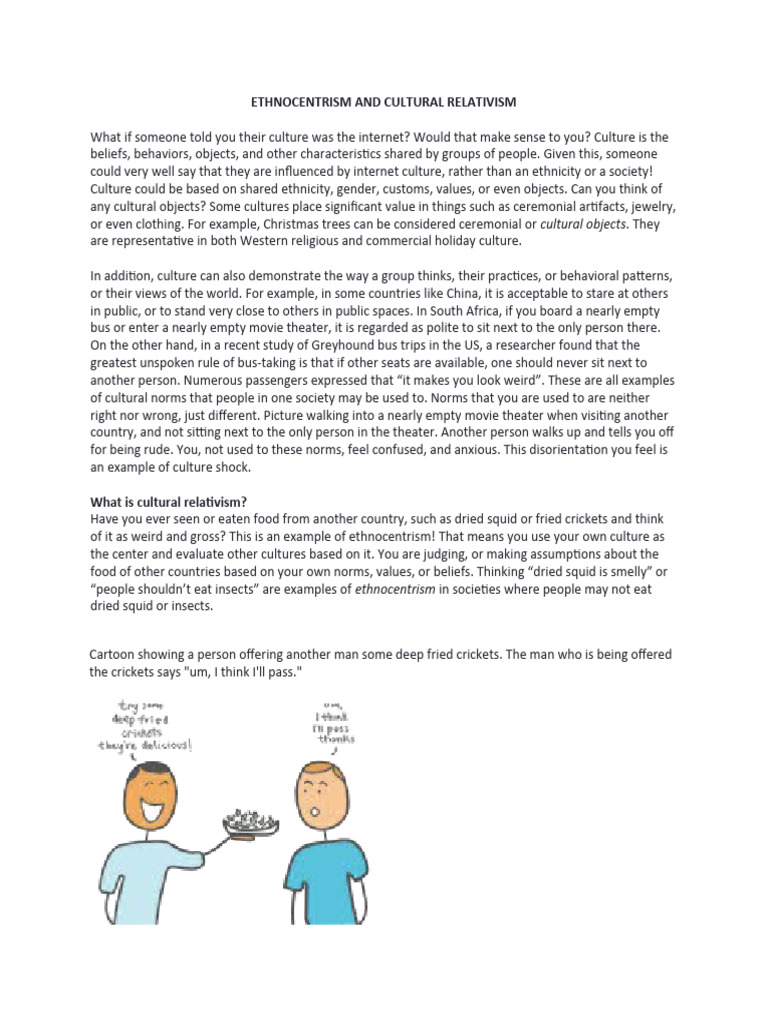Cultural relativism and ethnocentrism are two foundational concepts within the field of social sciences, especially in anthropology and sociology. While they represent opposing standpoints in the evaluation of cultures, they share similarities that are worth exploring. Understanding these similarities can elucidate the complexities of human interaction, values, and societal development.
Both cultural relativism and ethnocentrism arise from the fundamental human condition of navigating through diverse cultural landscapes. These frameworks influence how individuals perceive and interact with cultures other than their own. Cultural relativism posits that a person’s beliefs and activities should be understood based on that person’s own culture, rather than be judged against the criteria of another culture. Conversely, ethnocentrism is the tendency to evaluate other cultures in terms of the standards and values of one’s own culture, often leading to viewing one’s culture as superior. These dynamic views encapsulate how humans interpret behaviors, traditions, and societal values around the globe.
Despite their inherent oppositeness, both concepts serve similar functions in promoting an understanding of cultural dynamics. Each reflects the underlying human desire to categorize and make sense of the social warren in which we exist. Ethnocentrism typically cultivates a defensive posture towards different cultural practices, while cultural relativism encourages an open-minded approach. However, both are mechanisms through which individuals and groups assert identity, either by aligning with or contrasting against other cultures.
One notable similarity between cultural relativism and ethnocentrism is their role in shaping cultural identity. Ethnocentrism can bolster group cohesion and solidarity by fostering a shared sense of belonging and identity among its members. This phenomenon can be observed in various communities that rally around unique traditions, languages, and customs. On the other hand, cultural relativism provides a framework for individuals to appreciate diverse identities without relegating any culture to an inferior position. In both cases, identity formation is pivotal, albeit towards different ends; ethnocentrism crystalizes a single cultural narrative, while cultural relativism embraces multiplicity.
Furthermore, both concepts engage with power dynamics in a sociocultural context. Ethnocentrism often emerges as a byproduct of societal power structures, where dominant cultures impose their values on subordinate cultures. This imposition can result in cultural erasure or assimilation. Conversely, cultural relativism emerges as a counterforce, advocating for the preservation and respect of diverse cultural practices. However, even cultural relativism can inadvertently entrench power dynamics, particularly when it leads to cultural determinism. In this instance, cultural relativism may become a justification for harmful practices within a culture, creating ethical dilemmas.
Moreover, both ethnocentrism and cultural relativism engage with the concept of ethical considerations in intercultural relations. Ethnocentrism often leads to ethnical judgment, where cultural practices are deemed acceptable or unacceptable based on biased perspectives. In contrast, cultural relativism seeks to cultivate a respect for all cultural practices, promoting a dialogue that values understanding over judgment. Yet, both frameworks share the challenge of grappling with universal human rights standards, leading to contentious debates about what constitutes acceptable practices across cultures.
The cognitive dissonance that arises from engaging with cultural relativism and ethnocentrism is another point of similarity. Individuals who espouse ethnocentric views may experience dissonance when confronted with practices that starkly diverge from their own cultural norms. Similarly, adherence to cultural relativism can lead to internal conflict when individuals are confronted with practices they find morally repugnant. In both cases, individuals are faced with reconciling their beliefs with the realities of cultural diversity.
Education serves as a vital intersection for both cultural relativism and ethnocentrism. Educational frameworks that recognize and integrate these concepts can foster critical thinking and empathy among learners. For instance, a curriculum that promotes cultural relativism may encourage students to approach cultural studies without judgments. Conversely, an ethnocentric curriculum may reinforce nationalist sentiments or cultural superiority. Interestingly, an educational approach that balances both perspectives can equip students with the tools to understand and appreciate the nuances of cultural interactions while remaining critical of ethnocentric biases.
In a contemporary context, globalization has amplified the interactions between cultural relativism and ethnocentrism. The proliferation of digital communication and transportation allows diverse cultures to intersect more frequently, creating both opportunities for cross-cultural dialogue and challenges of ethnocentric backlash. Many societies struggle to embrace a multicultural ethos while wrestling with the inclination toward ethnocentric perspectives, often leading to societal tensions.
In conclusion, while cultural relativism and ethnocentrism occupy opposing positions in how cultures are perceived and evaluated, they hold essential similarities that play a significant role in human society. Understanding these similarities illuminates the complexities of cultural interactions and the human condition. Both concepts engage in identity formation, reflect power dynamics, pose ethical considerations, and evoke cognitive dissonance. Ultimately, fostering a balance between the appreciation of cultural diversity and an acknowledgment of shared humanity remains crucial in navigating the intricate web of globalization. The exploration of these themes provides valuable insights as societies endeavor to cultivate mutual respect and understanding in an increasingly interconnected world.
